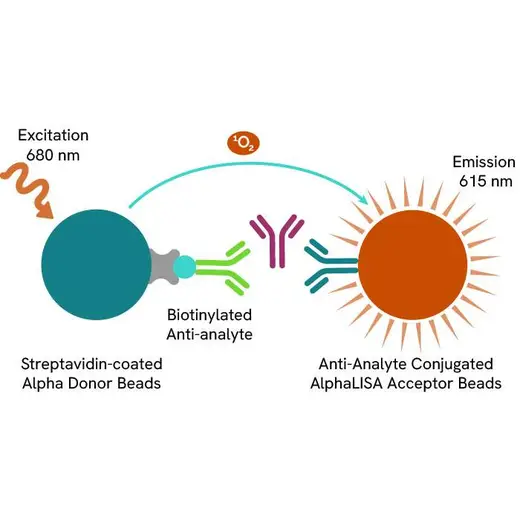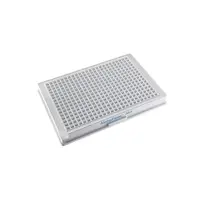
AlphaLISA Human CXCL13 Detection Kit, 100 Assay Points














The AlphaLISA® immunoassay kit for human CXCL13 enables the quantitative determination of human C-X-C Motif Chemokine Ligand 13 in serum and cell culture media using a homogeneous AlphaLISA assay (no wash steps).
For research use only. Not for use in diagnostic procedures. All products to be used in accordance with applicable laws and regulations including without limitation, consumption & disposal requirements under European REACH regulations (EC 1907/2006).
Product information
Overview
Formats:
- Our 100 assay point kit allows you to run 100 wells in 96-well format, using a 100 µL reaction volume (10 µL of sample).
- Our 500 assay point kit allows you to run 500 wells in 96-well or 384-well format, using a 50 µL reaction volume (5 µL of sample).
- Our 5,000 assay point kit allows you to run 5,000 wells in 96-well or 384-well format, using a 50 µL reaction volume (5 µL of sample).
AlphaLISA features:
- No-wash steps, no separation steps
- ELISA alternative technology
- Sensitive detection
- Broad sample compatibility
- Small sample volume
- Results in less than 3 hours
- Half the time of an ELISA assay
AlphaLISA technology allows the detection of molecules of interest in buffer, cell culture media, serum and plasma in a highly sensitive, quantitative, reproducible and user-friendly mode. In an AlphaLISA assay, a Biotinylated Anti-Analyte Antibody binds to the Streptavidin-coated Alpha Donor beads, while another Anti-Analyte Antibody is conjugated to AlphaLISA Acceptor beads. In the presence of the analyte, the beads come into close proximity. The excitation of the Donor beads provokes the release of singlet oxygen molecules that triggers a cascade of energy transfer in the Acceptor beads, resulting in a sharp peak of light emission at 615 nm.
C-X-C Motif Chemokine Ligand 13 (CXCL13), also known as B lymphocyte chemoattractant (BLC) or B cell-attracting chemokine 1 (BCA-1), is a CXC chemokine that binds receptor CXCR5 and plays a role in promoting the migration of B lymphocytes. This protein ligand can be found in the liver, lymph nodes, spleen and is expressed by neutrophils, macrophages, dendritic cells and epithelial cells. Elevated levels of CXCL13 are expressed in tumors, specifically breast cancer patients with metastatic diseases. CXCL13 serves as a potential therapeutic target or diagnostic marker.
Specifications
| Application |
Protein Analysis & Detection
|
|---|---|
| Assay Points |
100
|
| Assay Target Class |
Cytokine
|
| Automation Compatible |
Yes
|
| Brand |
AlphaLISA
|
| Detection Method |
Alpha
|
| Shipping Conditions |
Shipped in Blue Ice
|
| Therapeutic Area |
Inflammation
|
| Unit Size |
100 Assay Points
|
Image gallery












Video gallery


Resources
Cytokines play a vital role in both innate and adaptive immunity and are known for their ability to exert diverse functions on...
Advance your autoimmune disease research and benefit from Revvity broad offering of reagent technologies

SDS, COAs, Manuals and more
Are you looking for technical documents for this product. We have housed them in a dedicated section., click on the links below to explore.


How can we help you?
We are here to answer your questions.


































